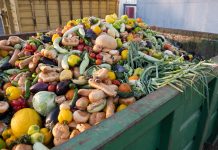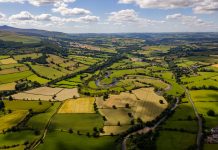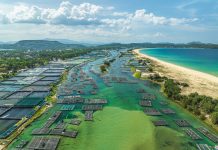Smart sensor AI technology can reduce environmental damage created by fertilisers, allowing farmers to use fertilisers less, and more effectively
Created by Imperial bioengineers, the sensors could help farmers work out the best time to use fertiliser on their crops and how much is needed, considering factors like the weather and soil condition.
This can reduce the negative effects of overfertilising soil – which releases the greenhouse gas nitrous oxide and can pollute soil and waterways – while also reducing costs for the farmer.
Overfertilisation is responsible for around 12% of once-arable land globally, which has now become unusable. Additionally, the use of nitrogen-based fertiliser has risen by 600% in the last 50 years.
However, it is difficult for crop growers to precisely tailor their own fertiliser use: too much and they risk environmental damage and money wastage; too little and they risk poor crop yields.
This study identifies how chemPEGS – chemically functionalised paper-based electrical gas sensor – could help growers yield maximum crops with minimal fertilisation.
AI benefits both the environment and farmers
ChemPEGS works by measuring levels of ammonium in soil, which is the compound that is converted to nitrites and nitrates by soil bacteria. Using AI technology called machine learning, it combines this with weather data, time since fertilisation, pH, and soil conductivity measurements.
The data is then used to predict how much total nitrogen the soil has now and how much it will have up to 12 days in the future, to predict the optimum time for fertilisation, which allows farmers to not over-fertilise.
This is a new low-cost solution, which could help growers yield maximum crops with minimal fertilisation, especially for crops which tend to need lots of fertiliser, like wheat. The technology could concurrently reduce growers’ expenses and environmental harm from nitrogen-based fertilisers, which are the most widely used fertiliser type.
Lead researcher Dr Max Grell, who co-developed the technology at Imperial College London’s Department of Bioengineering, said: “It’s difficult to overstate the problem of overfertilisation both environmentally and economically. Yields and resulting income are down year by year, and growers don’t currently have the tools they need to combat this.
“Our technology could help to tackle this problem by empowering growers to know how much ammonia and nitrate are currently in soil, and to predict how much there will be in the future based on weather conditions. This could let them fine-tune fertilisation to the specific needs of the soil and crops.”
Fertiliser can pollute the waterways and soil, growing unsafe food
Globally, much food is produced in soil, which is a non-renewable resource which is depleting due to pollution, especially from fertilisers and nitrogen pollution from agriculture. The researchers are now looking for alternatives to the usual heavy use of fertiliser, to be able to grow healthy food as well as reduce farming costs and pollutants.
Excess nitrogen fertiliser releases nitrous oxide into the air, a greenhouse gas 300 times more potent than carbon dioxide that contributes to the climate crisis. Excess fertiliser can also be washed by rain into waterways where it deprives aquatic life of oxygen, leading to algal blooms and reduced biodiversity.
However, tailoring levels of fertilisation to soil and crop needs can be extremely difficult as testing is rare, and current ways to measure soil nitrogen involve sending soil samples to laboratories. This a long, expensive process in which results are of limited use by the time they reach the grower.
Therefore, by using AI, this new method is a low-cost approach which can additionally speed up the process of testing the soil. Currently, chemPEGS only measures ammonium, but the machine learning component allows it to predict current levels of nitrate and future levels of nitrate and ammonium in the soil.
Senior author and principal investigator Dr Firat Guder, from Imperial’s Department of Bioengineering, said: “Much of our food comes from soil – a non-renewable resource which we’ll lose if we don’t look after it. This, combined with nitrogen pollution from agriculture, presents a conundrum for the planet – one that we hope to help tackle with precision agriculture.
“Our sensing technology can measure and predict soil nitrogen with enough accuracy to forecast the impact of weather on fertilisation planning, and tune timing for crop requirements, which we hope will help to reduce overfertilisation while improving crop yields and profits for growers.”
Researchers aim for chemPEGS to grow from just its prototype stage, and to become available for commercialisation with more testing and manufacturing standardisation in the future.











